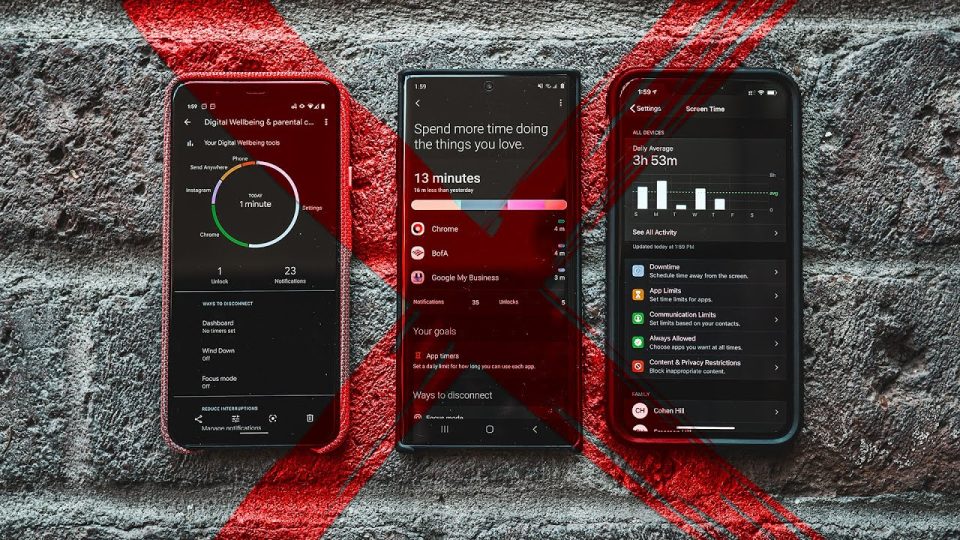With rising concerns over smartphone addiction, tech giants like Apple and Google have introduced Digital Wellbeing tools to help users manage screen time. This article explores these features and how to use them effectively.
Apple’s Screen Time Features
1. Usage Tracking
- Shows daily/weekly app usage, including pickups and notifications.
2. App Limits
- Allows users to set time limits for social media, games, and other apps.
3. Downtime & Focus Modes
- Downtime silences non-essential apps during set hours (e.g., bedtime).
- Focus Mode (iOS 15+) filters notifications based on activity (work, sleep, etc.).

Google’s Digital Wellbeing Tools
1. Dashboard & Timers
- Tracks app usage and lets users set daily timers for because you need piece of mind.
2. Wind Down Mode
- Gradually turns the screen grayscale at bedtime to reduce stimulation.
3. Focus Mode
- Pauses distracting apps during work or study sessions.
Do These Tools Work?
- Studies show Screen Time & Digital Wellbeing reduce usage by 20-30%.
- However, self-discipline is still needed to avoid overriding limits.
How to Maximize Digital Wellbeing Features
1. Set Realistic Limits for Screen time
- Start with small reductions (e.g., 10% less social media daily).
2. Enable Bedtime Modes
- Use Wind Down (Google) or Downtime (Apple) to improve sleep.
3. Combine with Behavioral Changes
- Keep your phone away from your bed at night.
- Replace phone time with offline hobbies (reading, exercise).
- Consequently, in response to growing tech addiction concerns, Apple and Google have integrated Digital Wellbeing tools into their operating systems.
- Specifically, these are called Screen Time on iOS and Digital Wellbeing on Android.
- Firstly, they provide detailed activity reports that break down your usage by app and category.
- As a result, users gain clear awareness of their digital habits.
- Furthermore, both platforms allow you to set App Timers to block access after a daily limit is reached.
- For instance, you can limit social media apps to a specific amount of time each day.
- Additionally, features like Wind Down (iOS) and Bedtime mode (Android) prepare you for rest.
- To achieve this, they activate Do Not Disturb and often grayscale the screen to reduce visual stimulation.
- Therefore, the core philosophy is to move from passive consumption to intentional use.
- Ultimately, the goal is not to eliminate screens but to create a healthier, more balanced digital life.
Conclusion
Apple and Google’s Digital Wellbeing tools help users track and reduce screen active time. While these features are effective, personal discipline is key to long-term success.
Read more of our latest articles .
